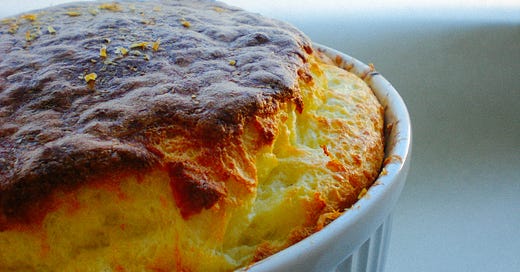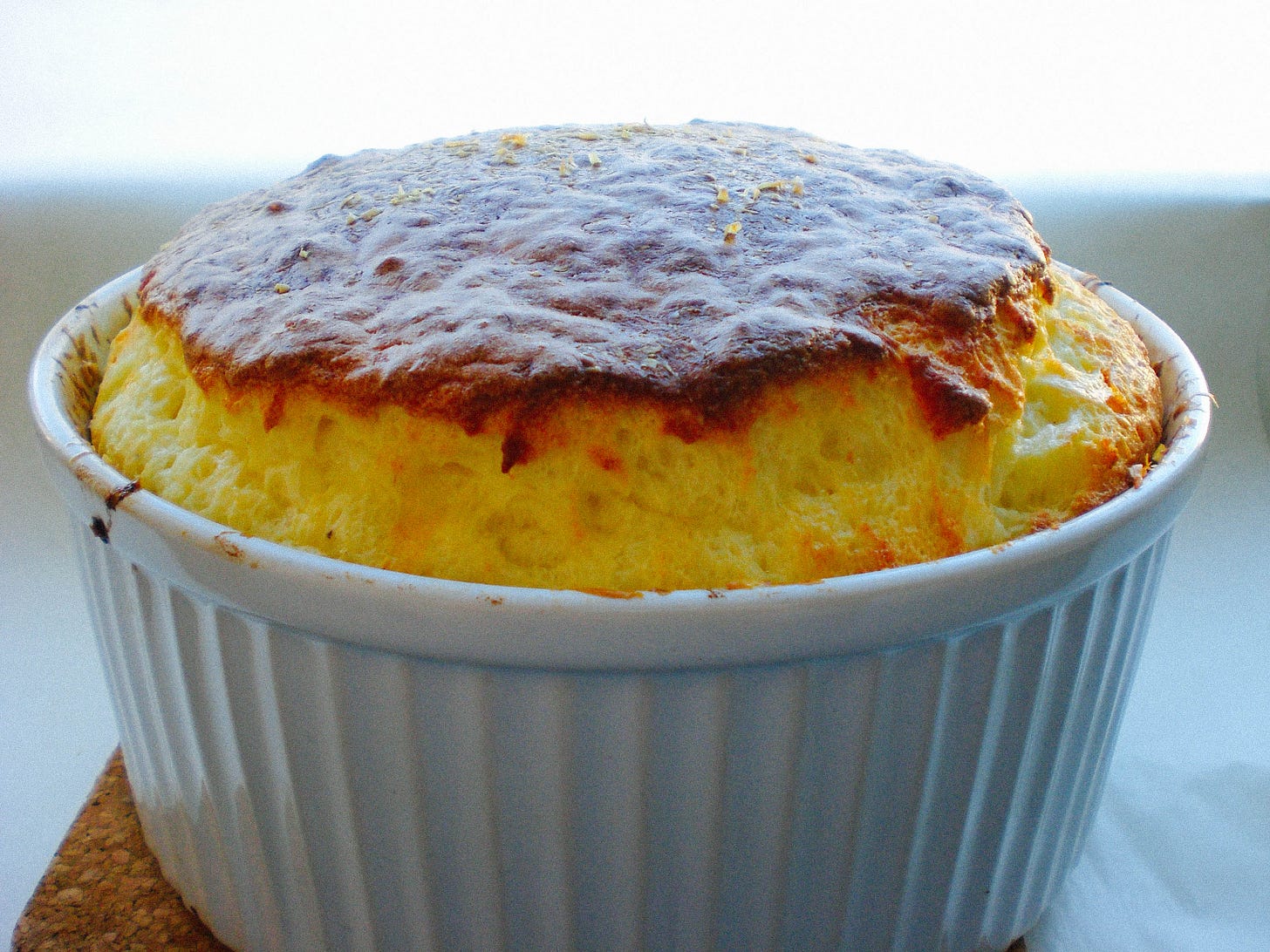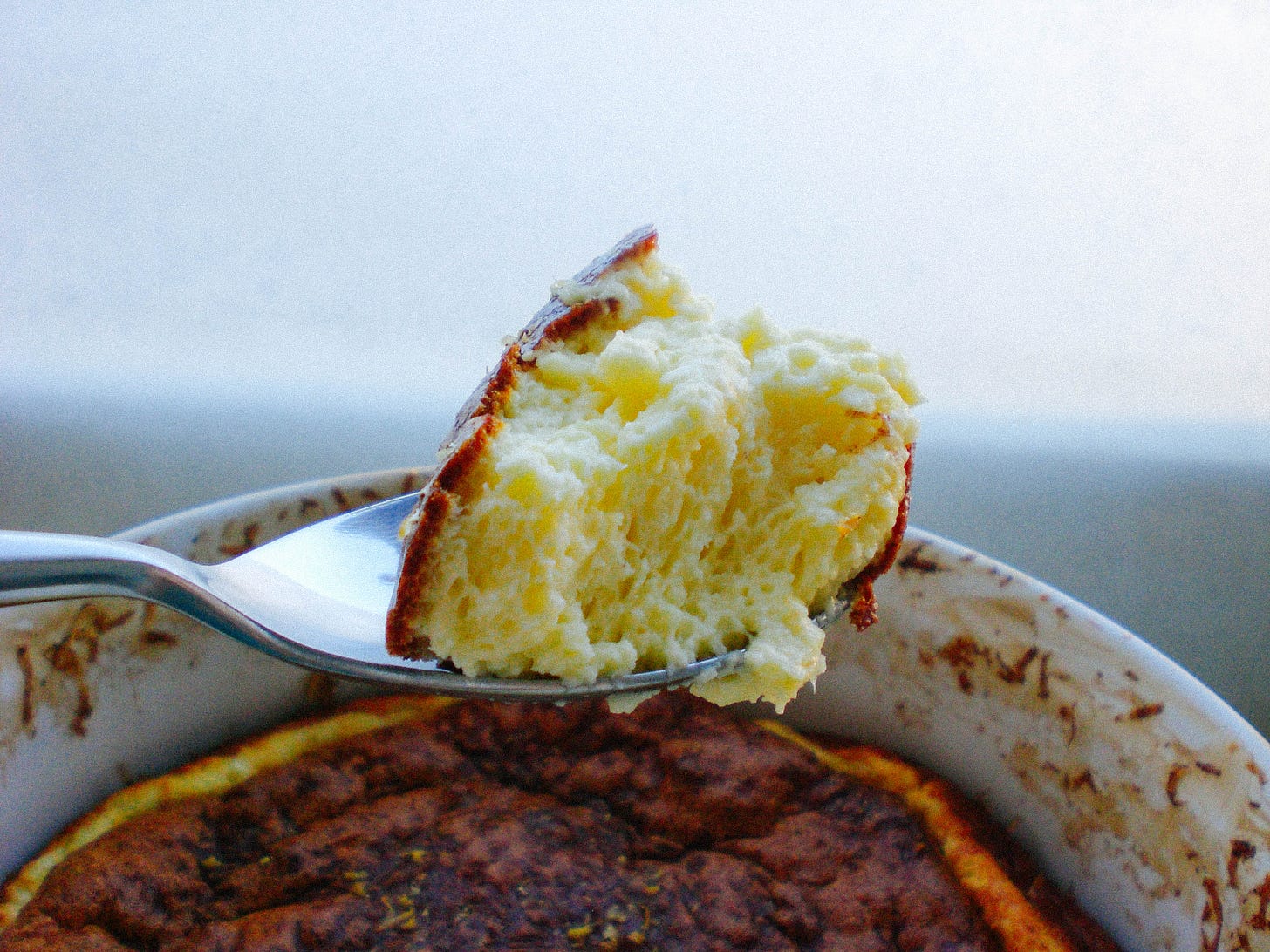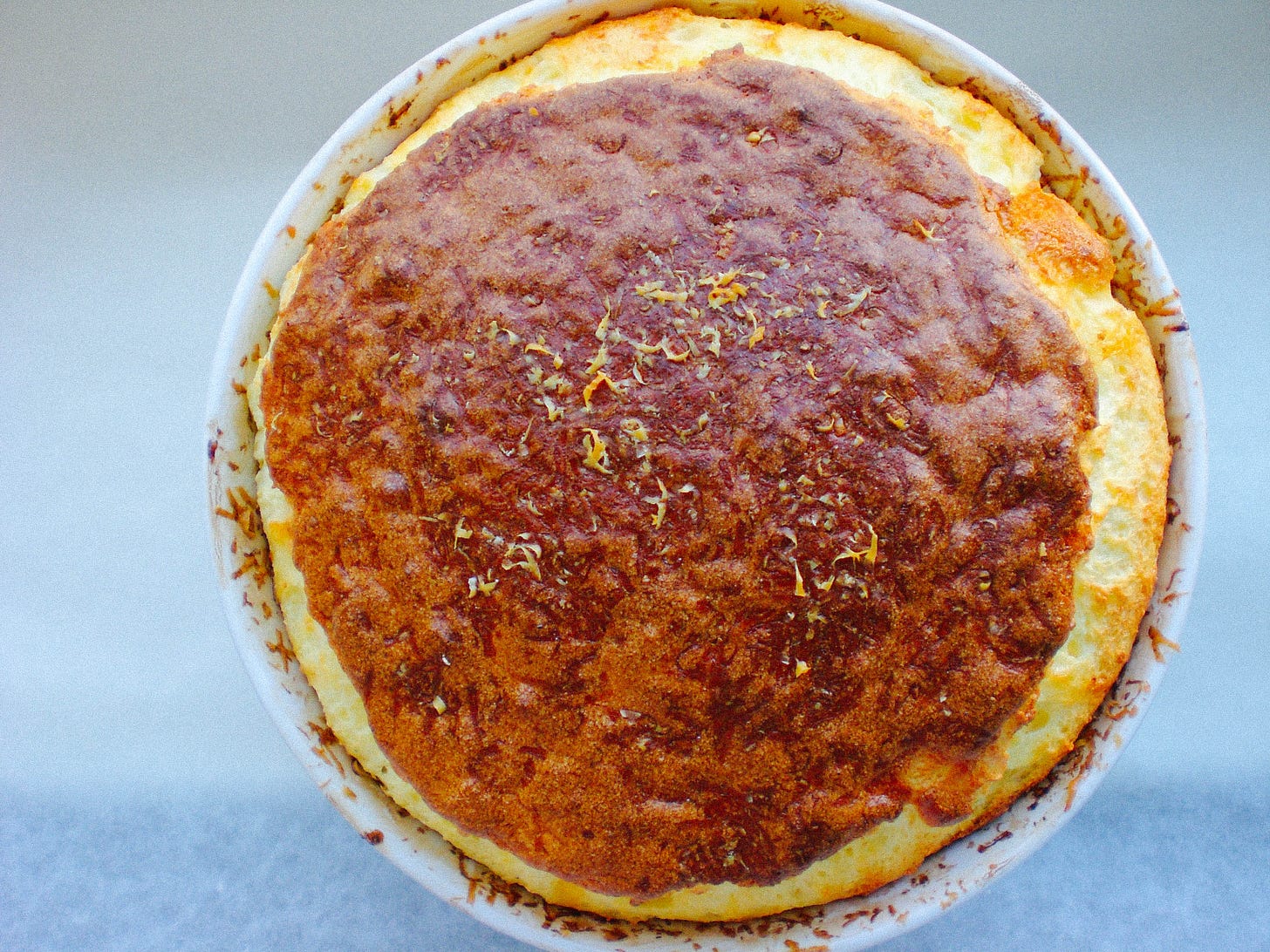Published originally on my blog on 22 January 2011
Whenever I hear the word soufflé, I'm imagining fat French chefs with white, tall, pleated hats running around in a busy restaurant kitchen, shouting to each other while trying to cautiously carry a soufflé dish that has just been taken out of the oven.
Or other times, I'm imagining an elegant French woman in a Parisian apartment kitchen, waiting patiently right next to her oven for the soufflé to rise while reading French Vogue, with a cigarette dangling from her red colored lips.
Well, that's just me; I like to visualize and make up stories about the people who might cook and eat certain types of food or dishes. Admittedly, some of those images are stereotypical but hey, when I think of souvlaki, I can't imagine anything other than a handsome Greek, virile man standing outside a souvlaki joint, getting all greasy while devouring a couple of them.
Or, when a dish of paella comes to mind, I can't help but visualize a raven-haired Spanish woman with a colorful apron wrapped around her waist, standing over a huge, steaming paella pan, adding to it yet another type of fresh seafood.
I enjoy these images but having said that, they are the ones I want to break down. I don't have to be Italian to make a mean spaghetti alla Puttanesca or Brazilian to make a good feijoada. I don't like to be intimidated by food or dishes. That's not what cooking is about and I'm a firm believer that anyone can cook anything.
And on that notion, my soufflé baking adventure began.
The first time I've ever made a souffle was about a year and a half ago when I took some classes in Amsterdam on French regional cooking. It was during one of those classes that I was confronted with the task of making a soufflé. A hot vanilla soufflé with lavender and candied violets or as the chef called it "Soufflé chaud vanille et lavande avec violettes confittes". It all sounded very French, very difficult and very complicated but it actually wasn't. With the help of my fellow aspiring soufflé makers and the chef in charge of the class, we accomplished a pretty good dish but I couldn't take the credit for it. I haven't done it all by myself.
So I had to attempt making a soufflé on my own, from start to finish, and the one I've always wanted to try was the classic savory soufflé—the cheese soufflé. I don't know why I've waited this long to attempt it but a few days ago, I thought it was time. I gathered my ingredients, my equipment and my courage and started making the roux, boiling the milk, beating the egg yolks and cheese into my sauce and then whipping the egg whites into a fluffy meringue and incorporating it into the cheesy mixture.
I put my creation in the oven and after thirty minutes I had a soufflé, or did I? My first attempt was somewhat of a failure since it didn't live up to its name, it didn't puff up, but the taste was excellent. Disappointed as I was, I wasn't going to give up that easily. The next day I was going to try again. I did some research on the internet and my cookbooks, figured out what I did wrong the previous day and tried it once more.
This time it was perfect. It puffed up beautifully—even though it took me some time to photograph it so what you see in the photos is a slightly collapsed version of it—and the taste was glorious. Light, fluffy, cheesy, soft, everything a soufflé should be. My very own cheese soufflé!
And then, after I spooned some of it onto a plate, it showed its truly ephemeral nature. Ah, the soufflé...
Three-Cheese Soufflé
The secret of a good soufflé is in the whipping of the egg whites. They need to be just right in order to make the soufflé rise. What actually makes the soufflé rise are all the tiny air bubbles that are trapped inside the beaten egg white foam. Those air bubbles expand as the soufflé bakes in the oven, causing it to increase in volume. When you take it out of the oven, the change in temperature causes these bubbles to contract thus making the soufflé collapse. Simple physics.
Helpful hips for success:











